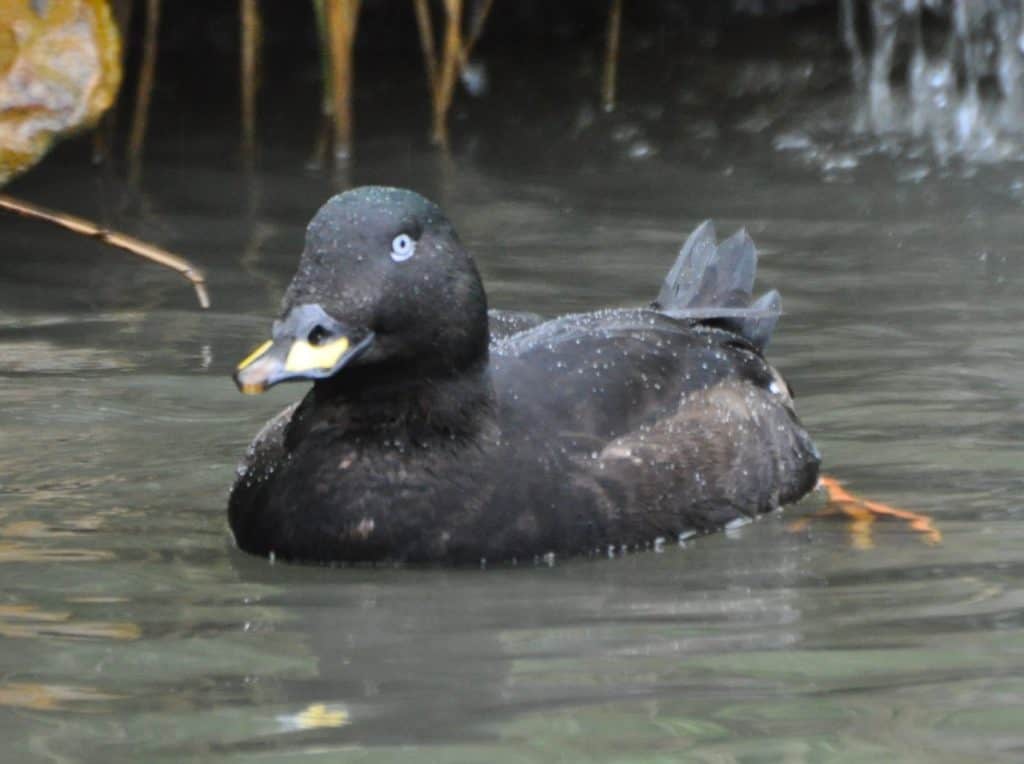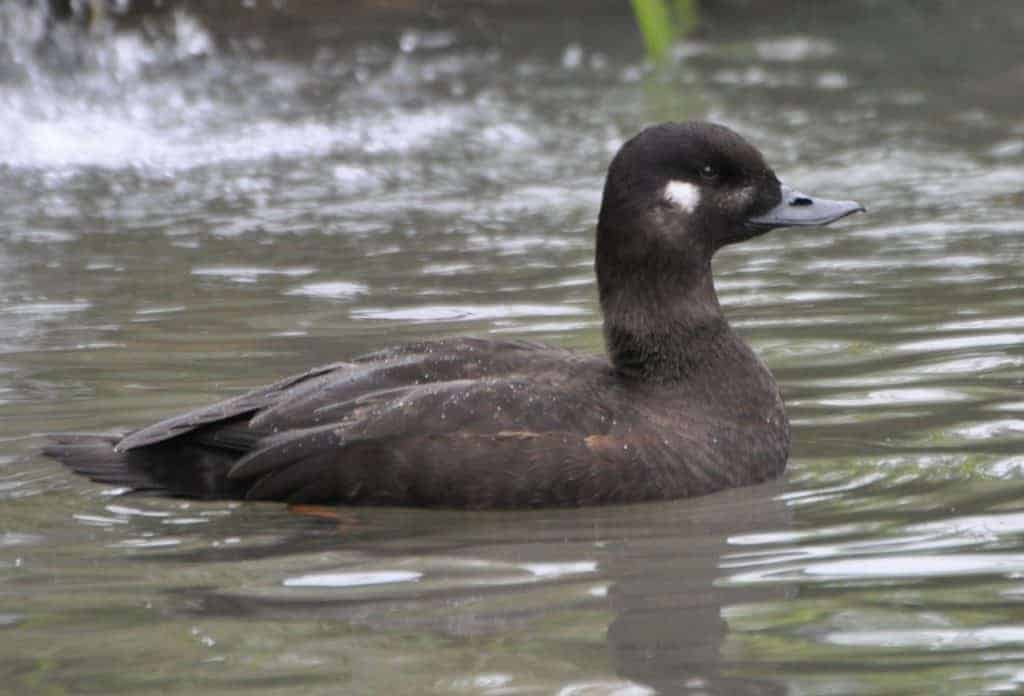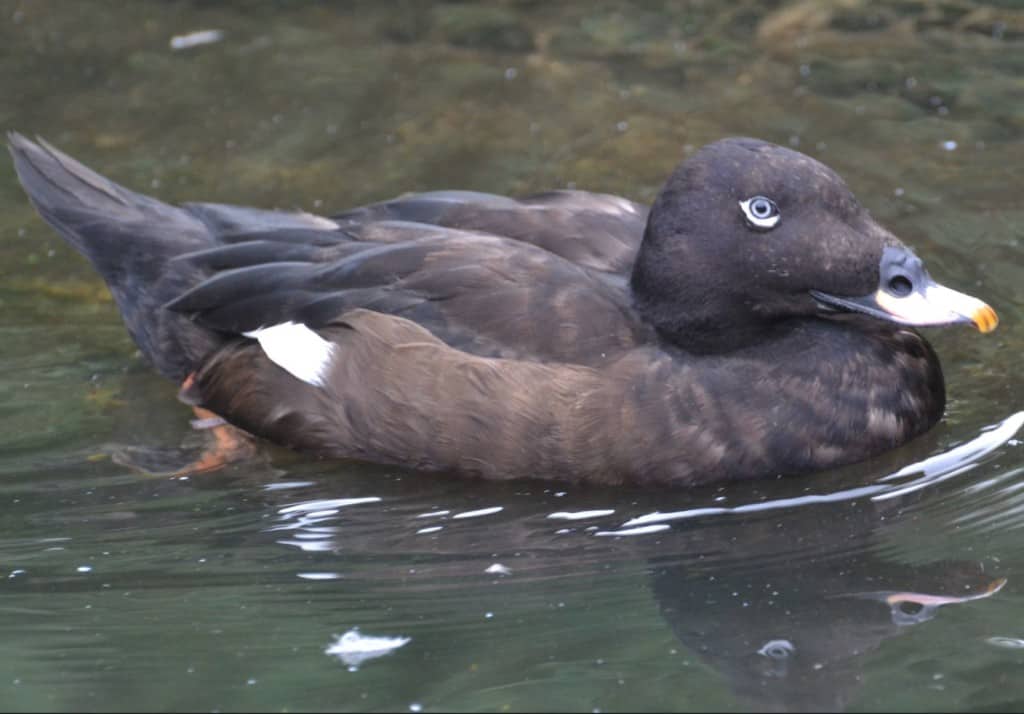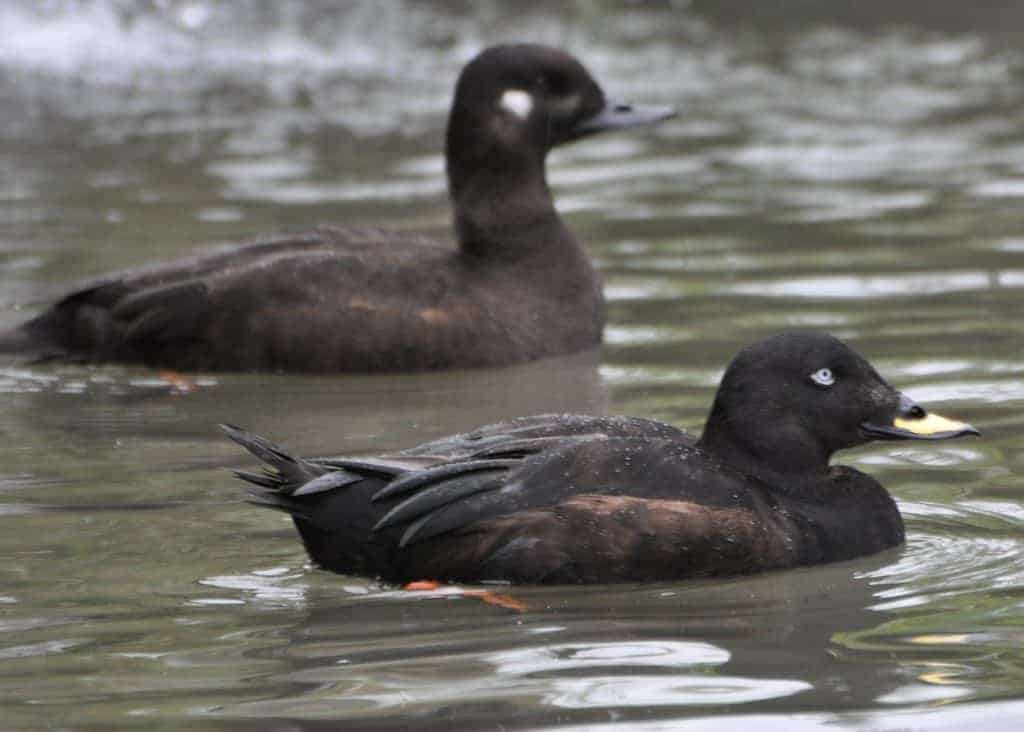Velvet Scoter


Melanitta fusca
The largest of its genus, the drake Velvet Scoter is a striking bird; his pure white secondaries contrasting with the majority of his plumage, which is blackish. He also sports a tiny white eye patch, while his bright orange-yellow bill is swollen at the culmen. The duck is dusky brown, with pale sub-ocular patches. Though generally a northern breeding duck, nesting from Scandinavia to Western Siberia, small numbers breed on high-altitude lakes in Turkey and Georgia.
At the last assessment, 90–100% of the wintering UK population were found at ten or fewer Important Bird Areas (IBAs).

In winter this species is found on inshore coastal waters, rarely inland, and never venturing ashore. A highly sociable bird, Velvet Scoters can be found in large flocks. They dive to feed, with the flock typically synchronising their diving.
Globally, this species is estimated to have undergone a population decline of 30–49% over the last three generations. Since being treated as a monotypic species it was initially estimated to be undergoing very rapid population declines and was classified as Endangered; however the rate of decline has apparently slowed so it has been down-listed to Vulnerable since 2015. In the same year it was up-listed from Amber to Red in Britain because it had become Globally Threatened since the last assessment here.

Difficult to keep successfully in captivity, Velvet Scoters have rarely been bred. Most birds in aviculture have been reared from wild-taken eggs, so the genetic pool of captive birds is very small. They require deep, clean and cold water if they are to thrive. Clutch size is 5–9 and the female incubates for 25 to 31 days.
Share this page